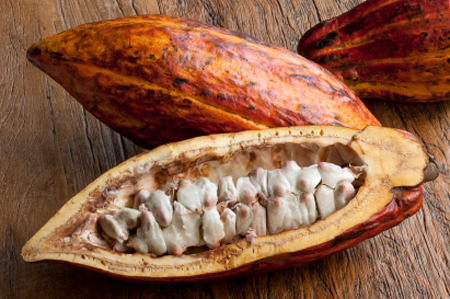Ivorian Cocoa Crop Seen by Ecobank Rising to Highest in 3 Years
Category: Cocoa
 (Bloomberg) – Cocoa farmers in Ivory Coast, the world’s largest producer of the beans, will harvest the biggest crop in three years this season partly due to “good” rains during the dry period, according to Ecobank Transnational (ETI) Inc.
(Bloomberg) – Cocoa farmers in Ivory Coast, the world’s largest producer of the beans, will harvest the biggest crop in three years this season partly due to “good” rains during the dry period, according to Ecobank Transnational (ETI) Inc.
Output in the 2013-14 season started Oct. 1 will rise to 1.495 million metric tons, the biggest since a record 1.51 million tons in 2010-11, said Edward George, an analyst at the Lome, Togo-based lender, which finances the cocoa trade in West Africa. Production was 1.445 million tons in 2012-13.
“Ivory Coast’s 2013-14 crop has defied expectations,” George said in a report e-mailed today. “The impact of seasonal Harmattan winds has been limited,” he said, referring to dry and dusty winds that usually blow from the Sahara desert from December through January and can damage cocoa crops.
Cocoa futures traded in New York rallied 21 percent last year as supplies fell short of demand. The commodity was the second-best performer in the Standard & Poor’s GSCI gauge of 24 raw materials in the year. Global production was 160,000 tons lower than consumption last season and another shortage is forecast for the current year, according to the International Cocoa Organization.
Bean deliveries to Ivory Coast ports are running ahead of last year’s as middlemen withheld cocoa from the 2012-13 mid-crop, the smaller of two annual harvests, to mix with beans from the current main crop to get higher prices, George said. Ivory Coast paid farmers 50 CFA francs ($0.10) a kilogram (2.2 pounds) more for beans from the main harvest compared with last season’s mid-crop, according to Le Conseil du Cafe-Cacao, the regulator.
Biggest Deliveries
Cocoa arrivals at ports in Ivory Coast were 14 percent higher at 1.08 million tons from the start of the season through Feb. 16, according to data from KnowledgeCharts, a unit of Commodities Risk Analysis in Bethlehem, Pennsylvania. Those were the biggest deliveries since at least 2004-05.
Farmers in Ghana, the second-biggest producer, will gather 860,000 tons of cocoa in 2013-14, up from about 835,000 tons a year earlier, according to Ecobank’s estimates. The end of a spraying program by industry regulator Ghana Cocoa Board, known as Cocobod, that helped Ghana’s farmers to increase production had raised concerns about this year’s output.
“The scaling down of Cocobod’s subsidized spraying and fertilizer program has had a limited impact, due to the fact that much subsidized fertilizer was smuggled to neighboring countries rather than used in Ghana,” George said.
The depreciation of the Ghanaian cedi, which fell 20 percent last year, will encourage smuggling of the nation’s beans into Ivory Coast, where the price paid to farmers is now higher, he said. The cedi was last year’s third-worst performer in a basket of 23 African currencies tracked by Bloomberg.
Rains, Sunshine
A “good mix” of rains and sunshine will boost the crop in Nigeria, the fourth-biggest grower, to 250,000 tons in 2013-14, according to Ecobank. That compares with 225,000 tons a year earlier. In Cameroon, dry conditions will cut this year’s crop to 190,000 tons from 225,000 tons a year earlier, George said.
“Africa’s small producers –- Uganda, Togo, Sierra Leone, Liberia and Guinea –- are forecast to have stable production in 2013-14, although new investment to rehabilitate plantations in Sierra Leone and Liberia could significantly increase their output in subsequent seasons,” he said.

